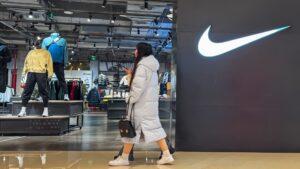The Supply Chain Dilemma: Vietnam and the Rising Tariffs
At Extreme Investor Network, we pride ourselves on keeping you informed about the latest trends that could impact your investments. Recently, the shifting dynamics of global trade have prompted a significant upheaval in the supply chains of many retailers, particularly those that moved production from China to Vietnam. As we delve into this complex scenario, we’ll provide insights unique to our platform and offer strategies to navigate this turbulent landscape.
The Shift from China to Vietnam
In recent years, many U.S. retailers have pivoted their manufacturing operations to Vietnam to circumvent the escalating trade war with China. This strategic shift sought to optimize supply chains and reduce risks associated with tariffs and retaliatory measures. According to the Office of the U.S. Trade Representative, imports from Vietnam surged to $136.6 billion in 2024, marking a remarkable 19.3% increase from the previous year. This rise solidified Vietnam’s position as a favored hub for low-cost manufacturing.
However, the tides have turned once again. As President Trump announced a staggering 46% tariff on imports from Vietnam, many companies—once reassured by their shift away from China—now find themselves grappling with a new set of challenges. The ramifications are particularly severe for companies heavily reliant on Vietnamese exports.
The Impact on Major Brands
For brands such as On Holding, Deckers Outdoor, Crocs, Nike, and Lululemon, which boast substantial sourcing from Vietnam, the implications of these tariffs are dire. On Holding, with an estimated 88% of its sourcing from Vietnam, saw shares plummet nearly 14% in a single day, creating a ripple effect throughout the market. Similarly, Deckers Outdoor, known for its Ugg boots, experienced a near 15% decline, reaching its lowest stock price since November 2023.
Even giants such as Nike and Crocs—both with around 44% of their supplies coming from Vietnam—faced significant stock drops of 15% and 11%, respectively. Lululemon, with approximately 40% of its sourcing from Vietnam, reported an 11% decrease in share prices, raising questions about the company’s future strategies in light of these evolving trade policies.
What This Means for Investors
As an investor, understanding the broader implications of these developments is crucial. Here are some insights to consider:
-
Diversification is Key: Companies overly reliant on a single country for sourcing may face significant risks. Consider expanding your portfolio to include companies that have diversified their supply chains and are better positioned to weather tariff storms.
-
Monitor Policy Changes: Stay updated on U.S.-China relations and the U.S. government’s trade policies. Shifts in trade agreements can significantly impact international sourcing strategies and, subsequently, stock performance.
-
Evaluate Brand Resilience: Look for companies that can absorb cost increases without significantly impacting consumers. Brands with strong loyalty and pricing power may mitigate the risks associated with rising tariffs.
-
Alternative Sourcing Strategies: Keep an eye on companies exploring alternative sourcing locations beyond Vietnam, such as India or Bangladesh. Those that adapt quickly may gain an edge in the market.
- Long-term Perspectives: While short-term volatility can be unsettling, focus on companies with robust fundamentals and innovative strategies for long-term growth. Many leading brands have previously demonstrated resilience and adaptability in challenging economic climates.
Conclusion
The recent tariff implications on Vietnam highlight the intricate nature of global supply chains and their impact on investment landscapes. At Extreme Investor Network, our mission is to empower you with the information and strategies needed to navigate these uncertainties. By diversifying your investments, staying informed on policy shifts, and focusing on resilient brands, you can strategically position yourself for success in this evolving marketplace.
For ongoing insights and expert analysis, stay connected with Extreme Investor Network—we’re here to guide you through the complexities of investing in today’s dynamic financial environment.

